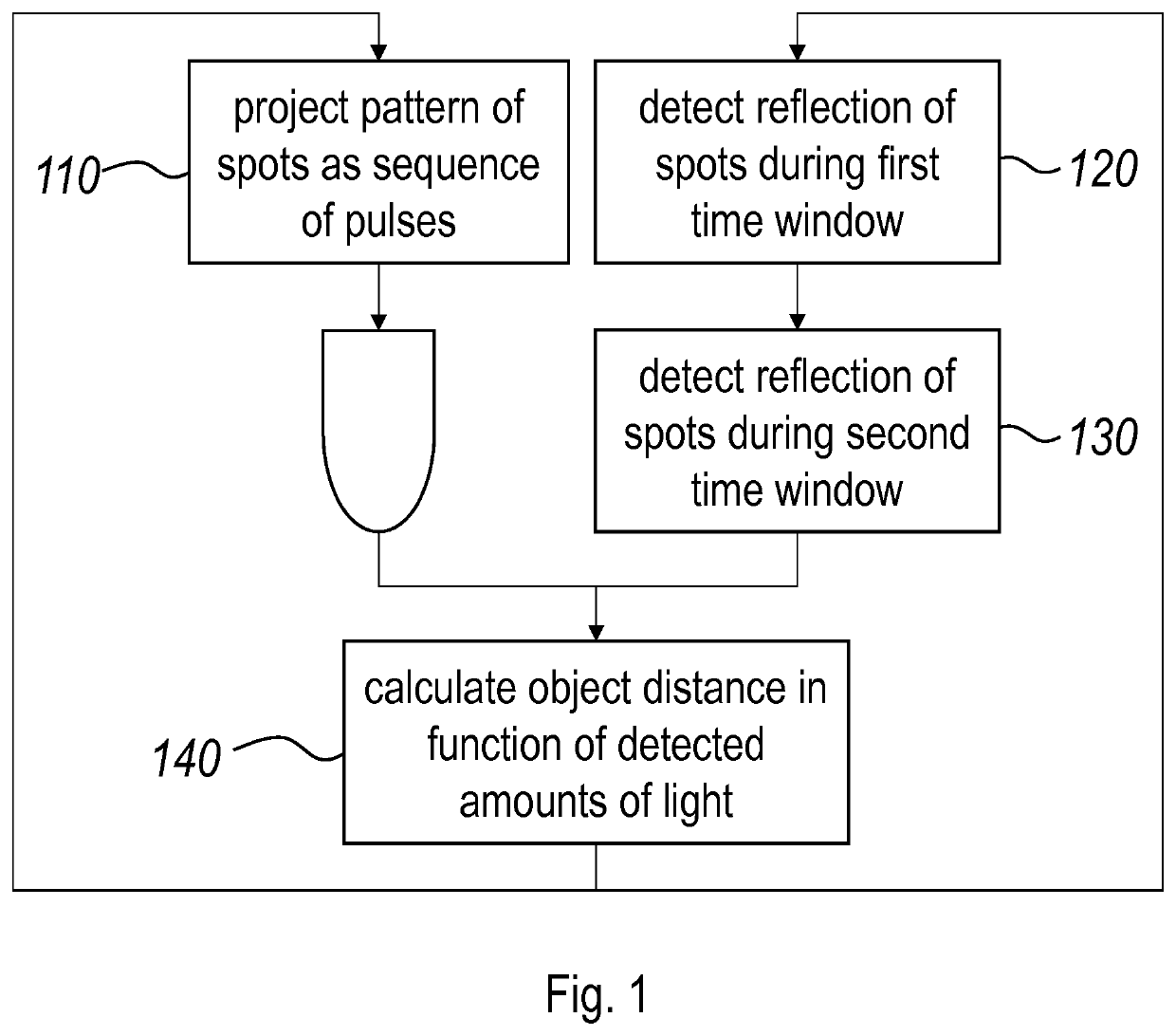System and method for determining a distance to an object
- Summary
- Abstract
- Description
- Claims
- Application Information
AI Technical Summary
Benefits of technology
Problems solved by technology
Method used
Image
Examples
Embodiment Construction
[0056]The surround sensing systems of the type disclosed in international patent application publication WO 2015 / 004213 A1, in the name of the present applicant, have the advantage of observing an extensive scene while illuminating that scene simultaneously or partially simultaneously only in a number of discrete and well-defined spots, in particular a predefined spot pattern. By using VCSEL lasers with an outstanding bundle quality and a very narrow output spectrum, it is possible to obtain a detection range with a limited amount of output power, even in the presence of daylight. The actual ranging performed in the system of WO 2015 / 004213 A1 relies on displacement detection, in particular triangulation, which was understood to be the only method practically available in the context of the long (quasi-stationary) pulse durations that were necessary in view of the power budget. To date, it had not been possible to achieve the same power / performance characteristics with a compact, se...
PUM
 Login to View More
Login to View More Abstract
Description
Claims
Application Information
 Login to View More
Login to View More - R&D
- Intellectual Property
- Life Sciences
- Materials
- Tech Scout
- Unparalleled Data Quality
- Higher Quality Content
- 60% Fewer Hallucinations
Browse by: Latest US Patents, China's latest patents, Technical Efficacy Thesaurus, Application Domain, Technology Topic, Popular Technical Reports.
© 2025 PatSnap. All rights reserved.Legal|Privacy policy|Modern Slavery Act Transparency Statement|Sitemap|About US| Contact US: help@patsnap.com



